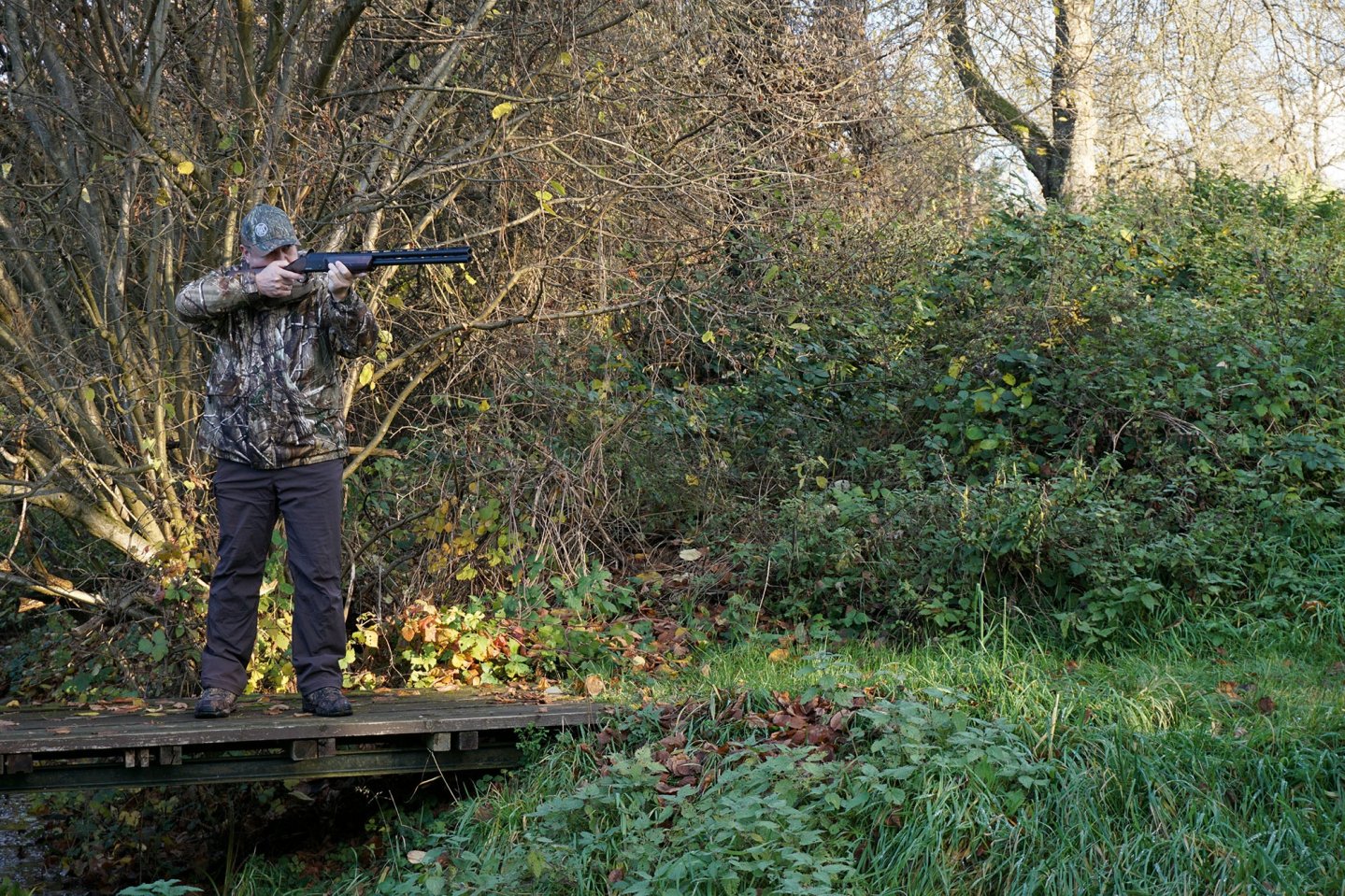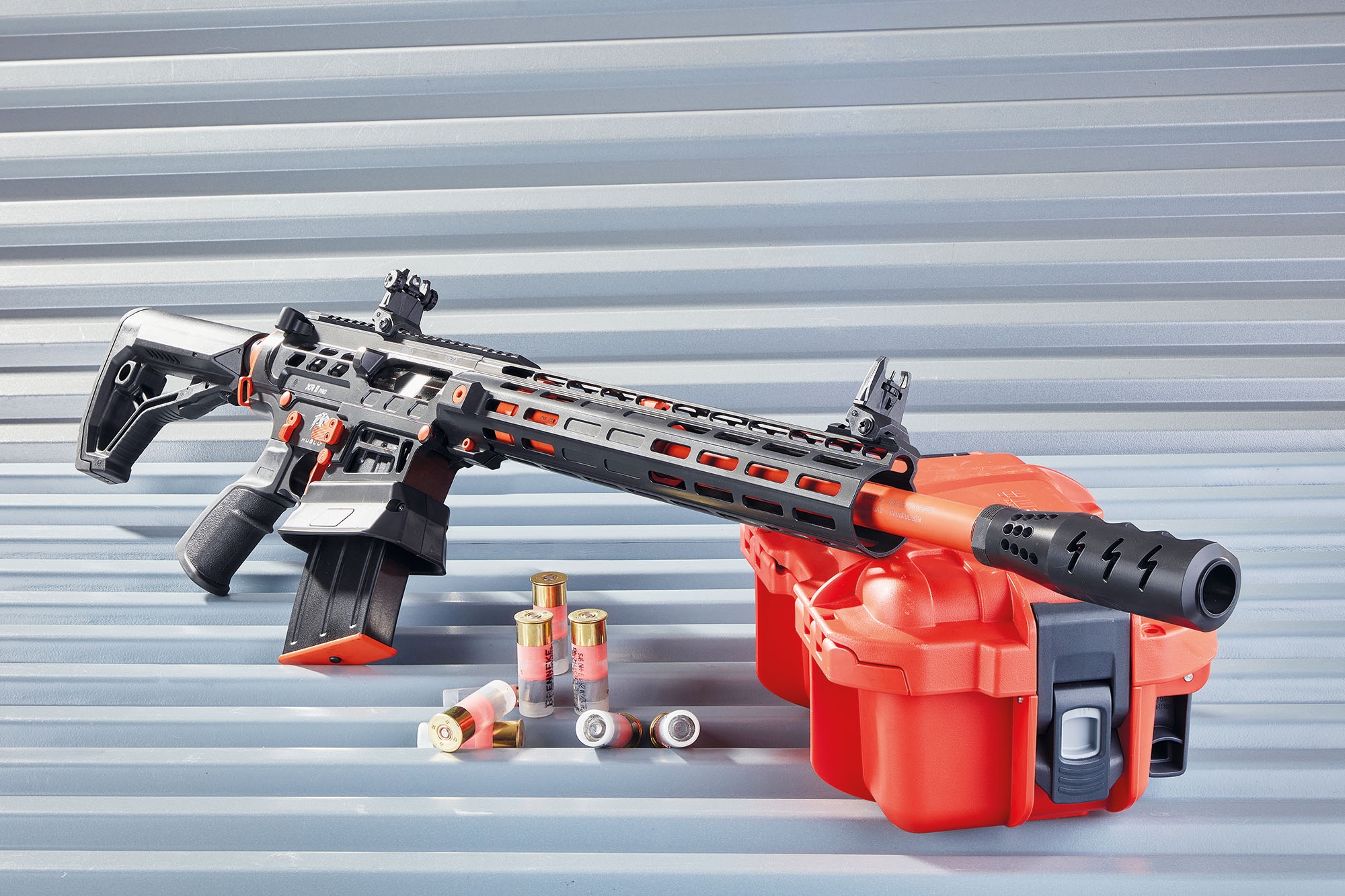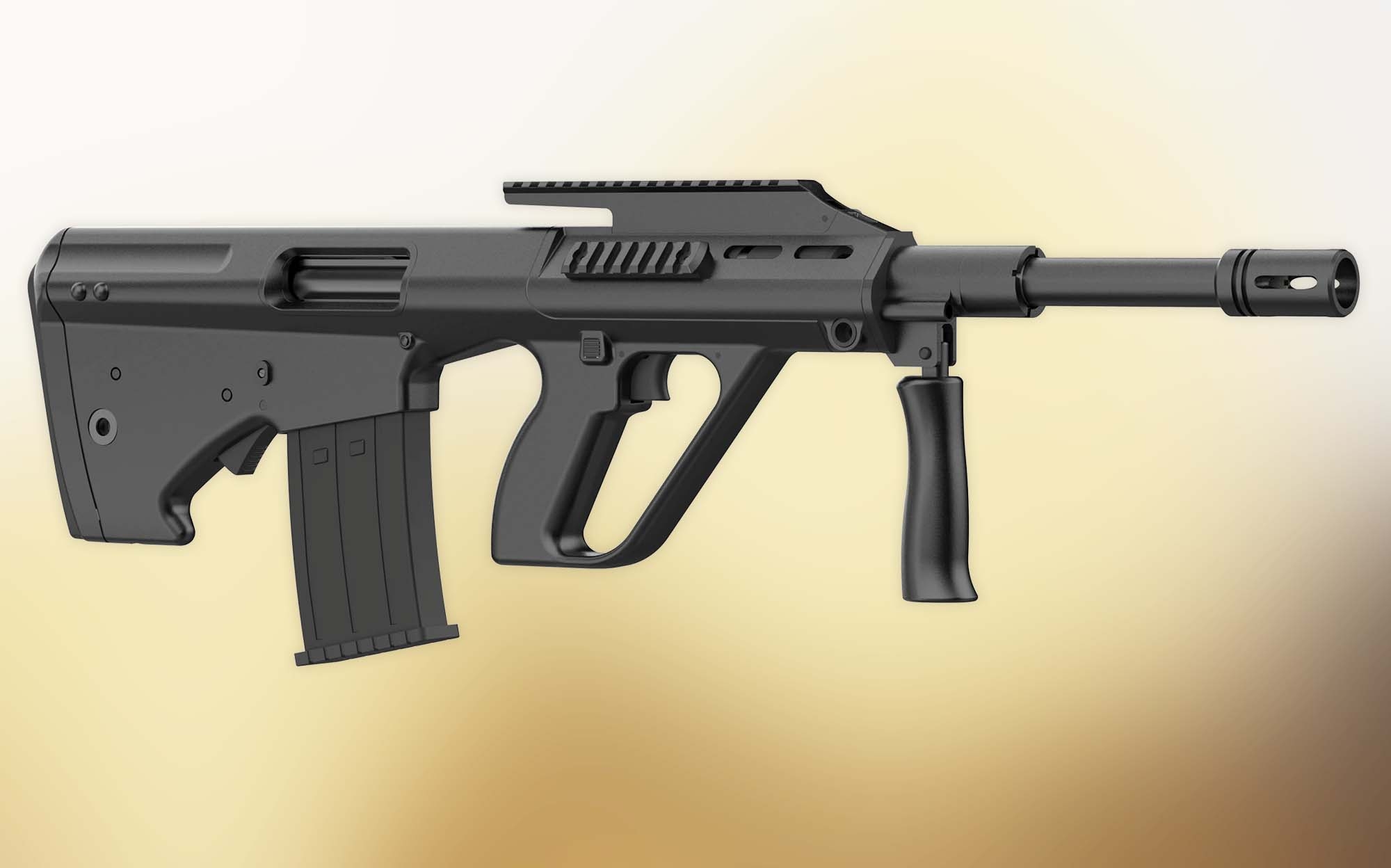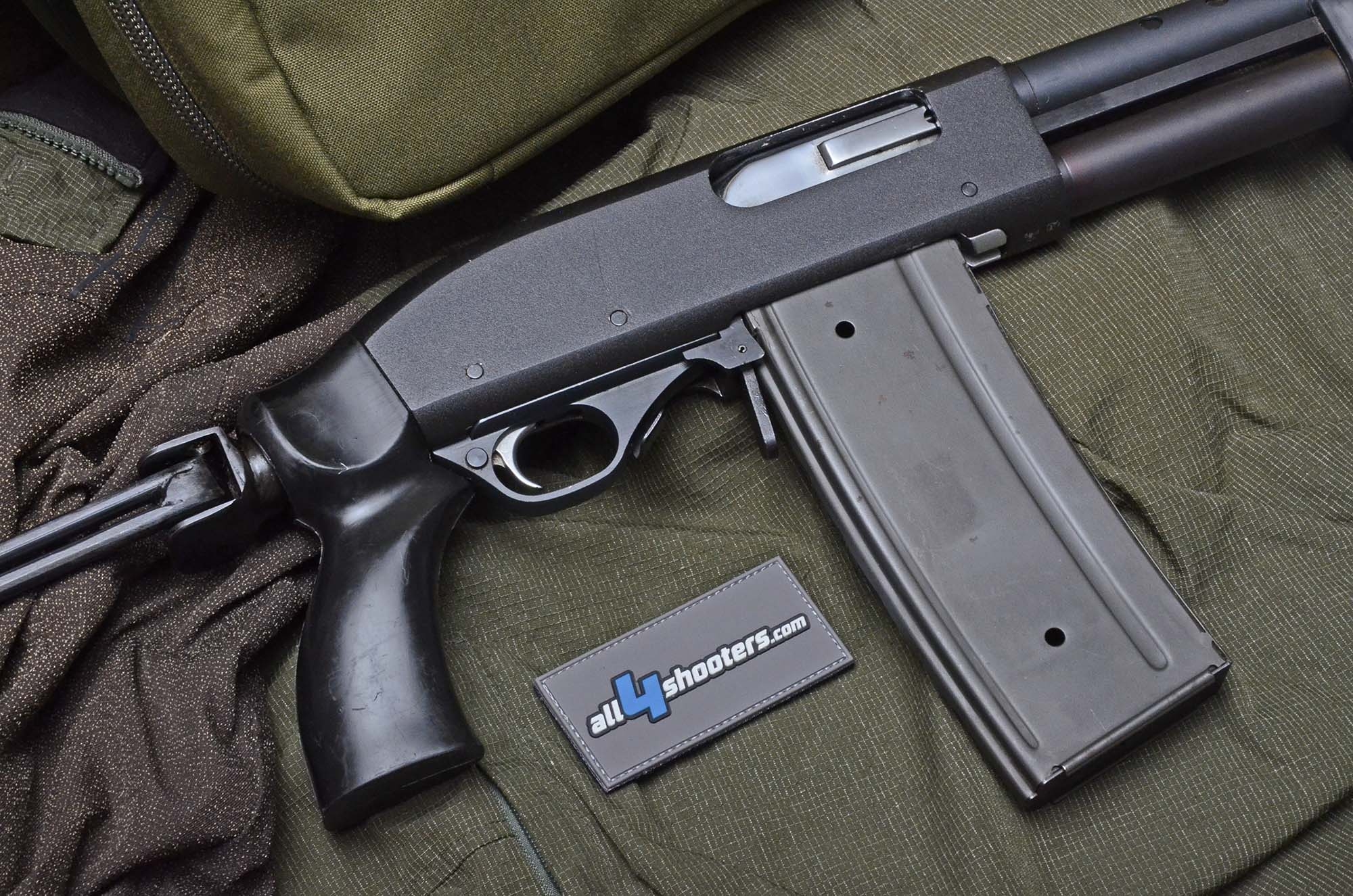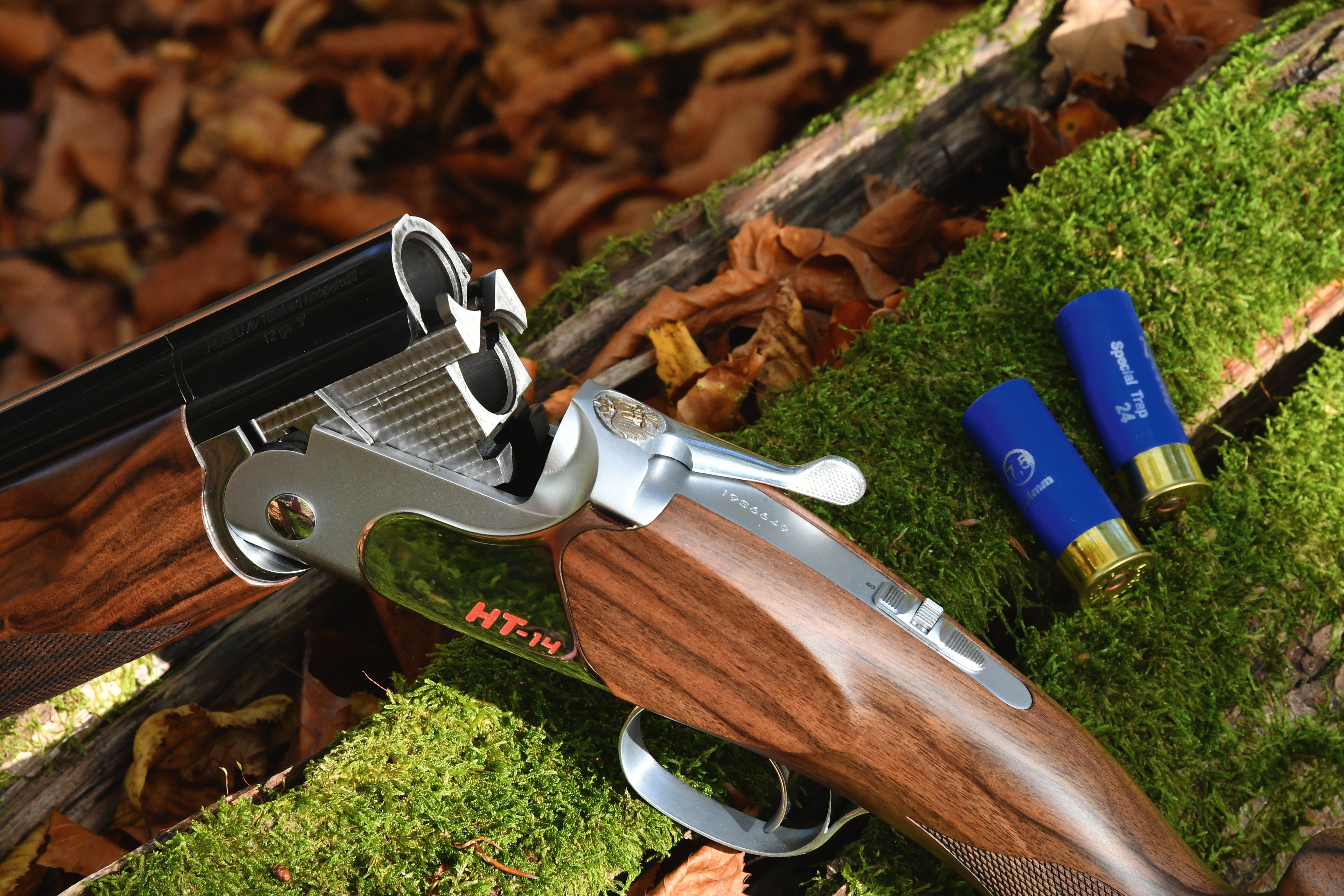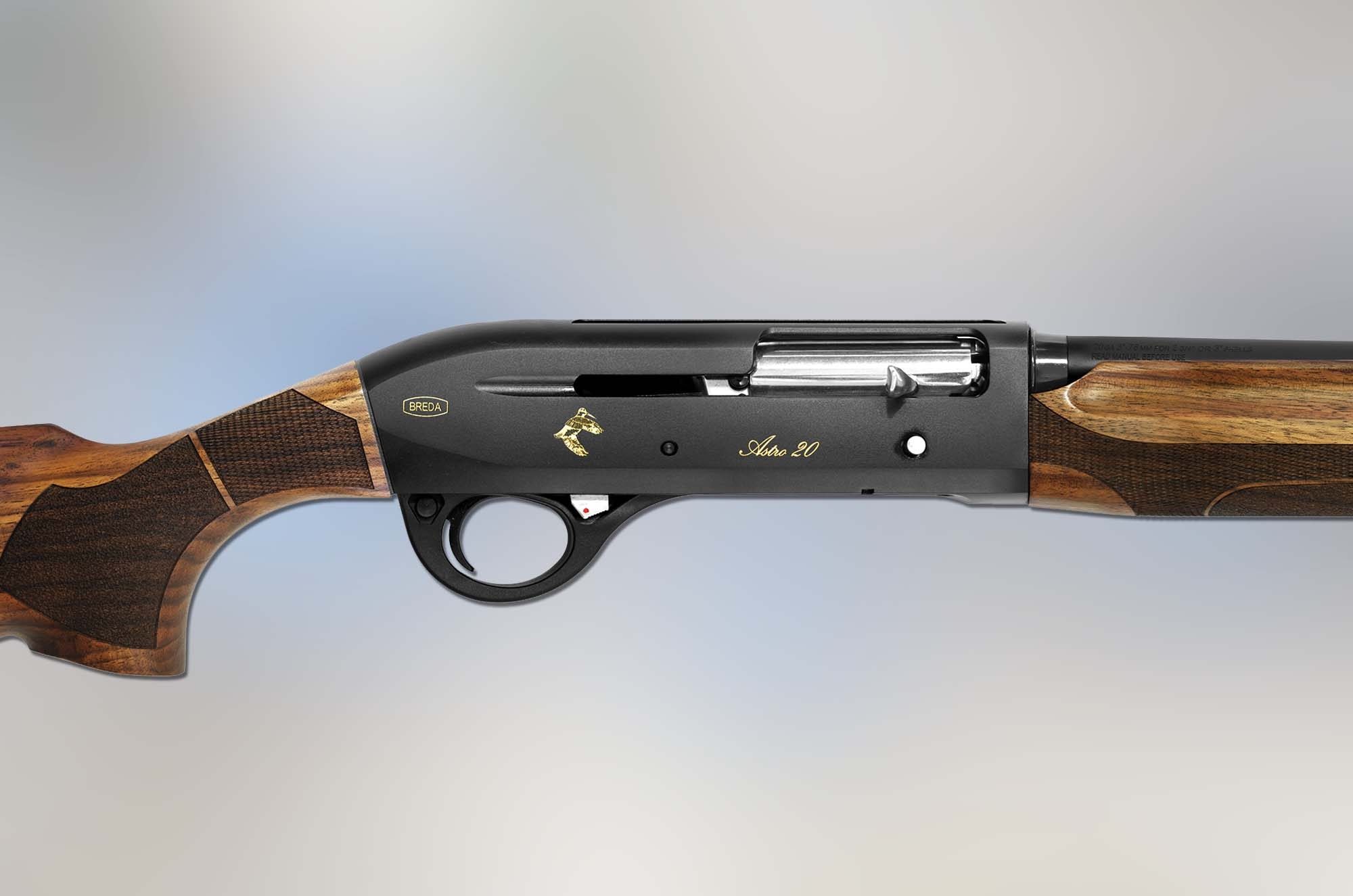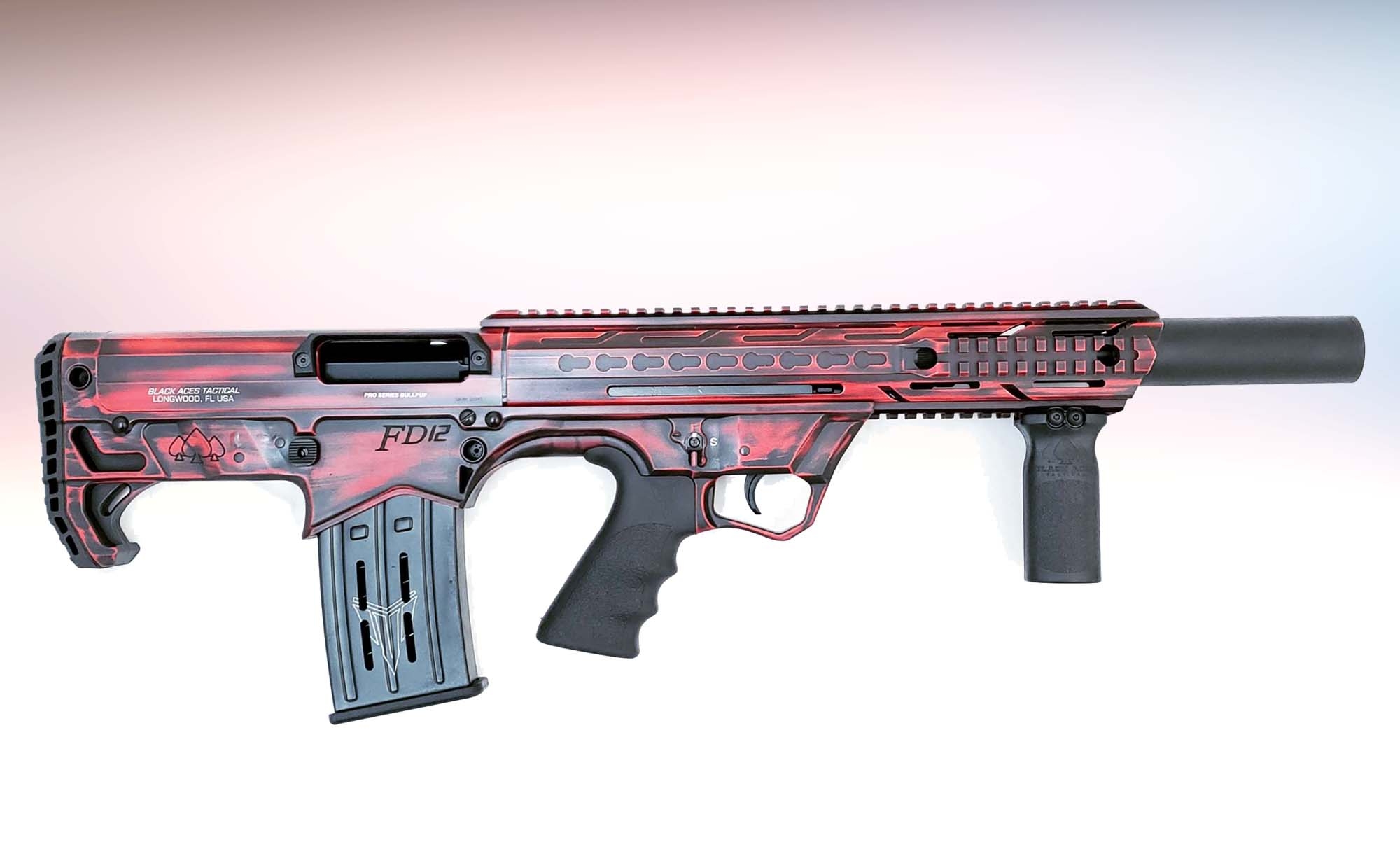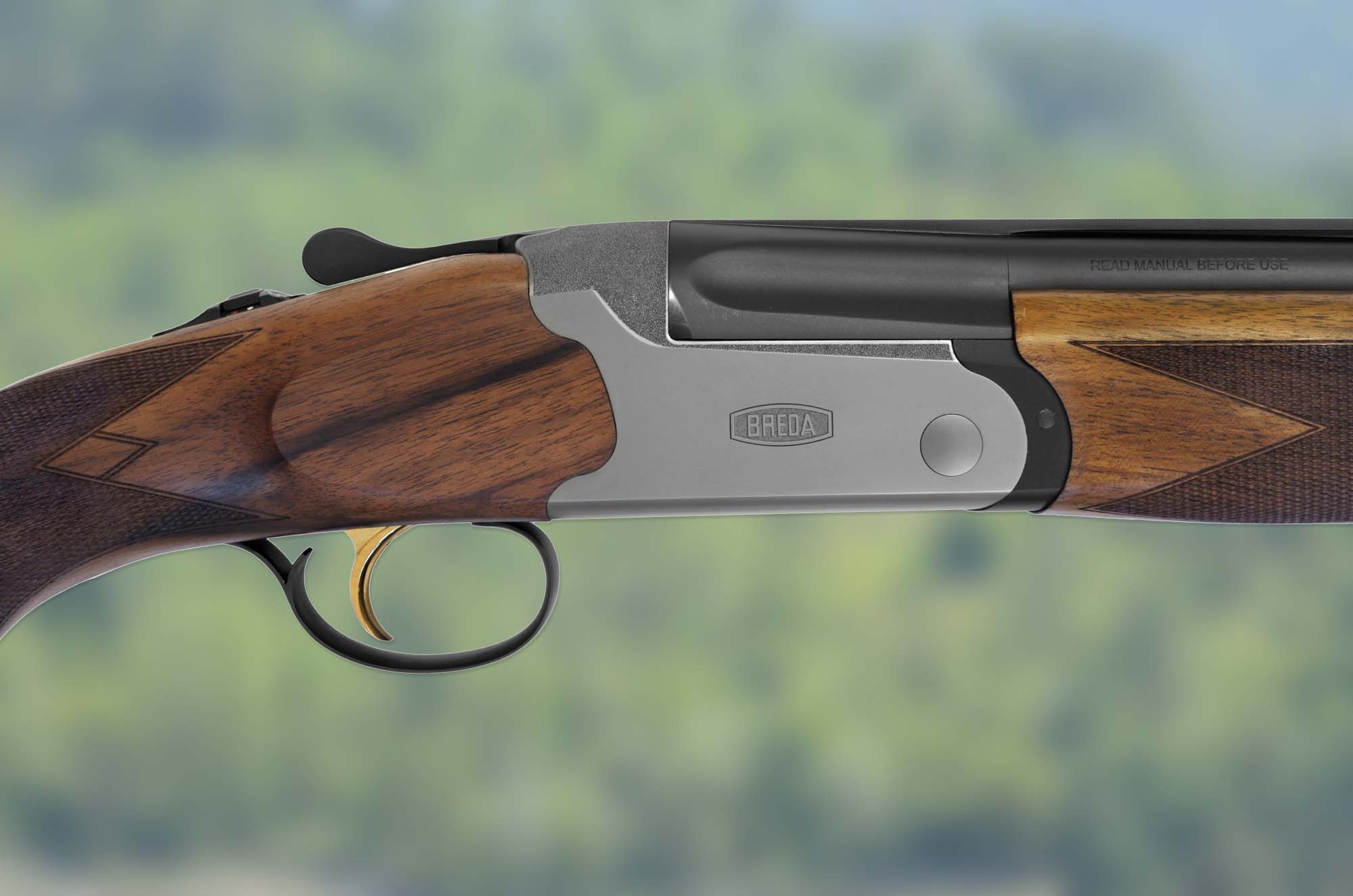According to the philosophy of the Turkish firearms manufacturer Derya, all developers themselves look back on a great deal of experience in dealing with the guns they are working on and then incorporate this knowledge into their designs. So it's not surprising that the present shotgun features one or two smart details in addition to proven elements. But more about that later. The Derya Meriva MR-100 will be available in most Europe at a suggested retail price of around 800 euros. This puts it squarely in the price range of lower-priced entry-level shotguns mostly manufactured in Turkey, such as the KOFS Zenith SX, the Akkar Churchill 206-x or the Mercury Hunting. Currently, the Meriva MR-100 is only available as a right-hand version in 12 gauge with 3”/76 mm chambers and a barrel length of 30”/76 cm.
Our first impression of the Derya Arms Meriva MR-100

The colors brown and black dominate the MR-100. As befits a traditional shotgun manufacturer, Derya crafts the stock from walnut and then gives it a protective oil finish. While the rather plain grain does justice to the price, the wooden parts of the test gun positively surprise with their very neat workmanship and precisely executed fits in the transition to the metal parts. When it comes to metal parts, Derya relies fully on a proven material – steel – and obviously processes it in a contemporary manner with modern CNC machines. Almost all metal surfaces visible from the outside feature a matte black finish. Only the shiny chrome trigger and the "Derya" logo, which is laser-etched into the steel on both sides of the receiver and shimmers through in a metallic silver, form a thoroughly pleasing color contrast to the predominant matte black, together with the walnut wood.

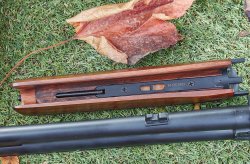
Things to know about the stock of the Meriva MR-100 from Derya Arms
The buttstock has a straight comb and a pistol grip. On the shoulder side, it ends with a composite recoil pad made of hard, smooth plastic and medium-hard rubber. For the forend, the designers opted for a beavertail contour. A machine-cut checkering on both the pistol grip and forend contact surfaces ensures a non-slip grip for the hands. To attach the fore-end to the MR-100, the designers used the principle developed by Anson and improved by Purdey – a latch that protrudes from the front of the fore-end stock and serves to unlock a spring-loaded pawl. When the forend is attached, this pawl firmly engages into a corresponding hook on the underside of the barrel bundle.
What you should know about the Meriva MR-100 barrel bundle
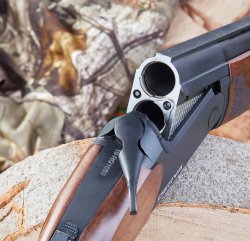
has been activated.
The internally mirror polished and hard chrome-lined barrels are connected by a ventilated center rib. In the area of the cartridge chamber, the barrels are formed together in a monoblock. The sides of the block feature a neatly executed jeweled finish. The upper barrel is topped by a 10-mm wide, continuous sight rib, which is also ventilated. To reduce distracting light reflections, the top of the rib is filed throughout. Around two centimeters before reaching the muzzle, a high-contrast red fiber optic sight on the rib assists the shooter's eye in taking aim.
The barrels bear the now obligatory steel shot proof mark for new shotguns. They also have threads in their muzzles for changing the choke. Derya Arms supplies the Meriva MR-100 with a total of five different interchangeable choke inserts. The choke inserts IC (Improved Cylinder = 1/4) and M (Modified = 1/2) were screwed into the barrels of the test weapon at the factory. The other Cylinder, Full (1/1) and IM (Improved Modified = 3/4) choke types were waiting for their use in a handy plastic box together with a choke wrench suitable for several barrel gauges. Since there are now various types of markings for interchangeable chokes, Derya falls back on the three most common ones for safety's sake: in addition to the engraving with the designation or its abbreviation and star symbols, there are also notches in the front of the inserts. The latter has the advantage that you can quickly recognize which type it is, even when the chokes are screwed in.
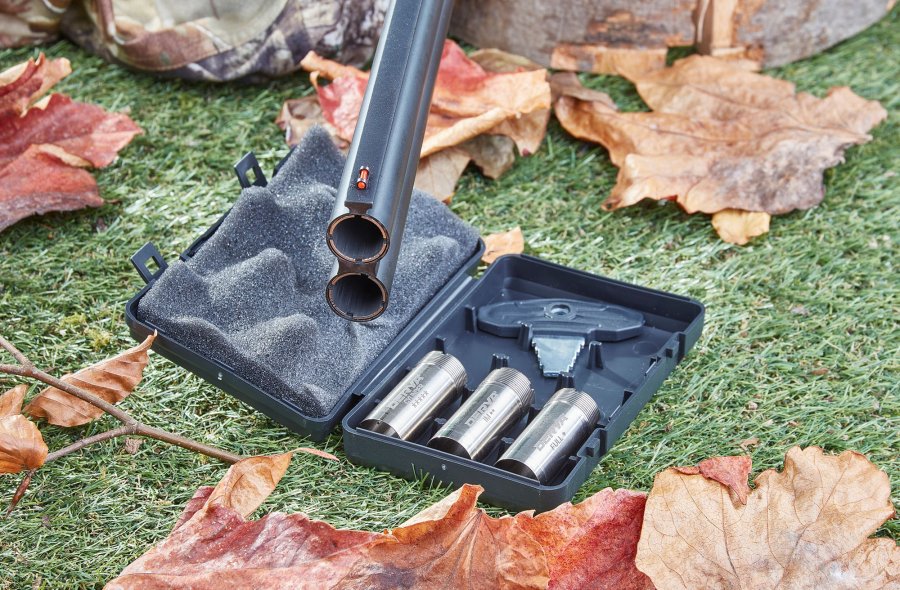
Derya Arms Meriva MR-100 action and trigger
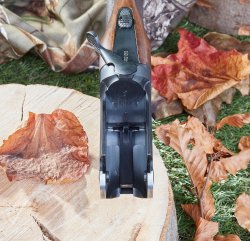
The MR-100 uses the well-tested and simple underlug lock. A classically shaped top lever on top of the tang is used to unlock the shotgun for breaking (opening). In keeping with the rest of the MR-100's outfit, the steel top lever has no frills, but it does have a surface texture reminiscent of scale skin on both sides.
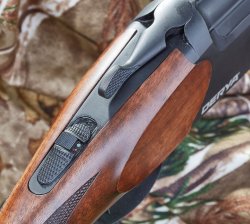
The MR-100 uses one trigger for both barrels. The position of the single trigger cannot be adjusted. The shooter uses a barrel selector switch to determine whether the trigger is to release the firing pin of the upper or lower barrel first. This is located in the form of a longitudinally grooved cross slide in the safety slide of the MR-100. Red and white dots next to the slide indicate which barrel is fired from first. The safety slide itself sits comfortably on the target within reach with the thumb of the shooting hand. Also on the safety, a fish-scale-like texture is designed to prevent the thumb from slipping off. When the slide is in the rear position, the trigger is locked and an "S" is visible. After the trigger is released, the second barrel is automatically engaged. This happens without the need for a firing impulse, as is the case with some shotguns. The ejectors of both barrels are also activated by the trigger. When the trigger is pulled, another small pin protrudes from the breech plate at the same time as the firing pin. The pin strikes a counterpart on the face of the ejector. When the shotgun breaks, this ensures that the empty cartridge case of a fired barrel is positively ejected from the chamber, while the cartridge in an unfired barrel is merely pulled out gently. On the test firearm, the Lyman Trigger Pull Gauge indicated an average of 2,150 grams for the lower barrel and 2,260 grams for the upper barrel. This puts the trigger pull weight of the Meriva MR-100 absolutely in the green zone for a hunting shotgun. Incidentally, the same applies to the respective characteristics of the trigger, which in the case of the test gun came quite close to the high-priced sporting shotguns. So there is absolutely nothing to complain about here either.
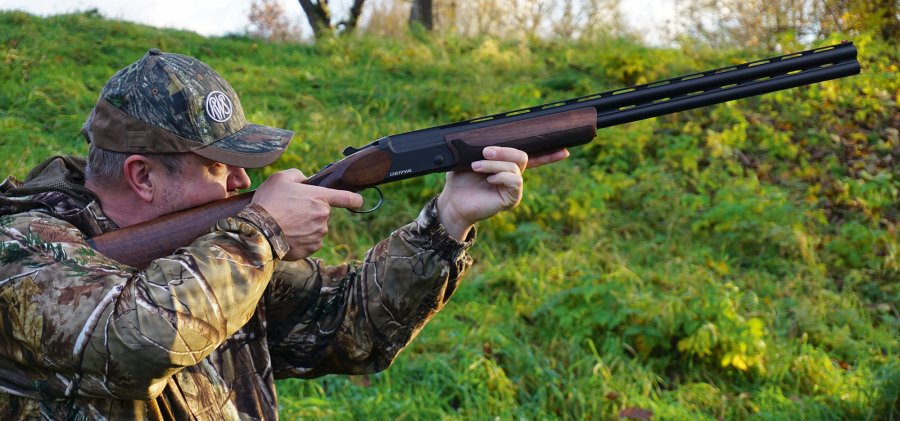
With the Derya Arms Meriva MR-100 on the shooting range and the hunting ground
Before taking a brand new shotgun to the range, it goes without saying that it should be opened and closed sufficiently at home. "Sufficiently" in this case means that the effort required to do so is reduced to such an extent that the usual shooting rhythm is not impaired. Although the MR-100 had a very precise and anything but loose-fitting action, the aforementioned procedure was comparatively quick here. Already after the shotgun was broken and closed about 35 to 40 times, it was smooth enough to shoot a few rounds in the sporting course with it. By the way, the opening lever could be operated without excessive force from the very beginning.
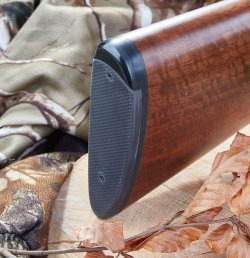
With an overall length of 47.5”/1207 mm and a weight of 7.55 lb/3.4 kg right away, the shotgun fit the almost 6 ft/180 cm tall author of sturdy build, so that the clay pigeons broke in the usual manner and numbers from the second round. This was mainly due to the fact that Derya based on the stature of the approximately 1.80 to 1.90 m tall average European with glove size 10 to 11 for the stock drop and cast, as well as the length of 14.76”/375 millimeters and the size of the pistol grip. The center of gravity of the MR-100 is about a finger and a half in front of the hinge pin.
However, due to the 76-centimeter-long barrels, this is acceptable from a hunting point of view, especially since the shotgun can still be aimed and swung through relatively smoothly. Speaking of aiming: the recoil pad scored particularly well here. The upper end is made of smooth plastic, which prevents it from catching on clothing. The remaining 80 percent of the recoil pad's surface is covered with a non-slip rubber that provides sufficient grip when the gun is drawn into the shoulder. When firing, the shotgun did not cause any problems and performed its duty without any malfunctions.
Derya Arms Meriva MR-100 specs and price
| Model: | Derya Meriva MR-100 |
| Price: | 799 euro |
| Gauge: | 12/76 |
| Capacity: | 2 rounds |
| Overall
Length: | 47.5”/1207
mm |
| Stock
Length: | 14.76”/375 mm |
| Trigger
Pull Weight (U/O): | 2,150 /
2,260 g |
| Weight: | 7.55
lb/3427 g |
| Features: | Underlug lock, oil-finished walnut stock, single trigger with barrel selector switch in safety slide, selective ejectors, interchangeable chokes. |
Test wrap-up: what the Derya Meriva MR-100 shotgun in 12/76 offers
The Derya Meriva MR-100 offers not only the hunting beginner a lot for the 800 euro he/she has to put on the table. In terms of workmanship and features, as well as function, the shotgun more than lives up to this price. What the hunter misses, however, are sling swivel mounts. Those who need these should add around 80-100 euros for the parts and the gunsmith of their choice.
What we liked: | What we found less good: |
Favorable price-performance ratio | No sling swivel mounts |
Well thought out recoil pad | Somewhat sharp edges on choke inserts |
Pleasant recoil behavior |
For more information about the manufacturer's guns please visit the Derya Arms website.


